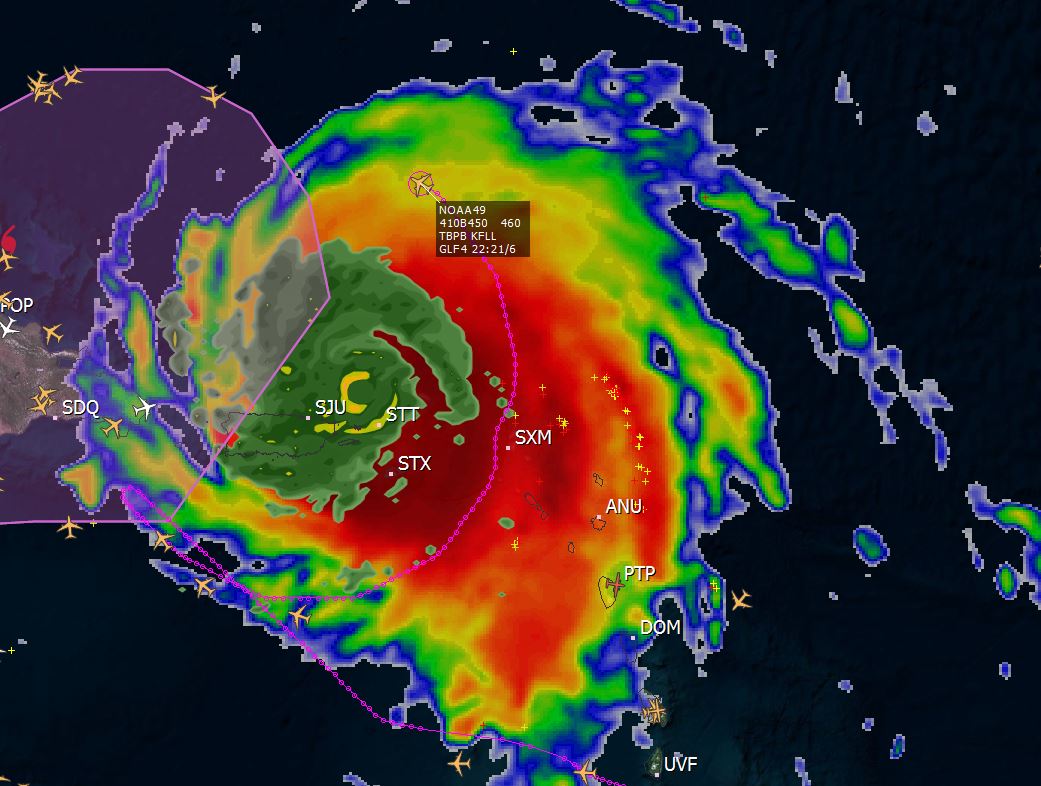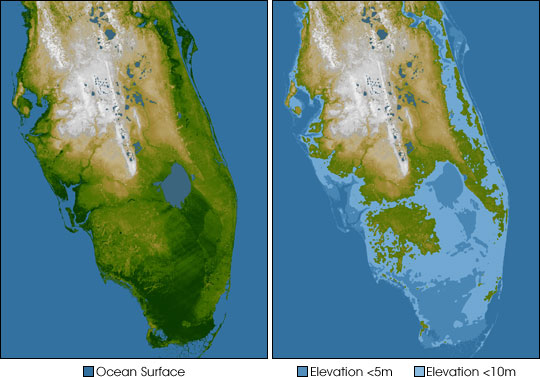Editor’s note: There is a disturbing trend going on on the internet right now of people spreading false information about the Hurricanes Harvey, Irma, Jose and Katia. What is disturbing about it is that it looks very much like an orchestrated campaign of scaremongering and when notorious disinfo operations like Alex Jones get in on the act, it becomes even more suspicious.
Hurricane Scaremongering Reaches Category 6 Proportions (Videos)
_http://www.veteranstoday.com/2017/09/07/hurricane-scaremongering-reaches-category-6-proportions/
Who is behind this campaign? To what purpose are they spreading fear? Who might benefit from causing people to panic? These are questions we have no answers to right now.
What is important and made doubly so by this disgraceful and disturbing fearmongering, is that the people living in the potential paths of these hurricanes do not panic, rather, they should remain calm and seek out accurate and reliable information from legitimate sources such as the local authorities and the professional meteorologists.
Take all necessary precautions, make sure you know where your local shelters are located and that you can get there if need be, but don’t get scared and run for the hills, don’t base your decisions on crap you read on the internet, especially social media and video sharing sites, be sensible, calm and rational and make sure you are well-informed from legitimate sources. Ian
BBC - Hurricane Irma: No such thing as a category six storm
As with Storm Harvey in Texas last week, fake news, videos and doctored images about Irma have spread rumours about the scale and path of the hurricane – which meteorologists have been keen to warn against online.
Irma, which is the most powerful Atlantic storm in a decade, has devastated parts of the Caribbean with wind speeds of 285km/h (180mph), leaving at least 10 people dead and reducing buildings to rubble.
Fake videos - One popular video posted on Thursday morning appears to show the force of hurricane winds hitting Puerto Rico, in the Caribbean, accompanied by howling winds which sound like a train engine. It was retweeted over 3,000 times. (Video)
But Irma did not hit Puerto Rico directly, instead the hurricane passed by the island causing power cuts.
Matching footage, which appears to be from the British Virgin Islands was posted on Wednesday, seven hours ahead of the video labelled Puerto Rico.
However, this footage was posted on Twitter without sound. It was picked up by a Turkish meteorological site and later by video uploading platform LiveLeak.com, as well as other social media users, who described the scene as San Juan, Puerto Rico. At some point along the way, the soundtrack was added.
The result was confusion among Twitter users, some of whom accused @Whippodilly of “fake news” – while others asked about the video from Wednesday night, which they had seen labeled as Puerto Rico. (Video)
Another video, with almost 8,000 likes and retweeted more than 9,000 times, was also shared on Wednesday night by American weather reporter Jamie Erle, but matches footage which is over a year old and likely to be from Tornado Dolores in Uruguay, Craig Silverman of BuzzFeed tracked the spread of the video.
The video – with the caption ‘Hurricane Irma’ – has been viewed almost 28 million times on Facebook. It was later tweeted with the claim it was taken in Barbados.
Another video, with more than half a million views, claims to show the hurricane passing over Barbuda but – as Twitter user @PicPedant. pointed out – the same YouTube account posted the same footage the day before, claiming it to be from the Virgin Islands, although a voice on the video claims it to be from “Tropical Storm Gonzalo,” a hurricane which hit Bermuda in 2014.
Meanwhile, a Facebook Live purporting to show passengers trapped in an over-turned bus during Irma gained millions of views, only for the footage to match clips from Cyclone Vardha, which struck Chennai, India in 2016.
Not ‘Category 6’ - Reports regarding the strength of Irma and its path across the Atlantic have generated thousands of reactions online, as well as caused concern by residents who were led to believe they live in the storm’s trajectory.
An article titled “Category 6? If Hurricane Irma Becomes The Strongest Hurricane In History, It Could Wipe Entire Cities Off The Map” published last week on the blog The Economic Collapse was shared more than two million times from blogs and Facebook pages such as Sons of Liberty Media and Freedom Outpost.
Although the article did not categorically state that the hurricane had been classified as ‘Category 6′, it implied there was serious scientific suggestion it should be, and some on Twitter understood it to be.
On Wednesday, the claim Irma was a category six storm was repeated by InfoWars’ Alex Jones. (Tweet - Video)
Hurricanes cannot currently be categorised as category six according to the Saffir-Simpson scale – the highest rating is category five, which scientists describe as bringing catastrophic damage. However, many were led to believe the unusual force of Irma had caused it to be categorised as off the established scale. One American meteorologist put the record straight on Twitter.
Last week rumours spread that Houston, Texas was going to receive a second battering from hurricane winds and rain, after photoshopped images appeared of Irma’s path through the Americas.
The National Oceanic and Atmospheric Administration (NOAA), who monitor meteorological conditions in America, reposted a tweet from its National Weather Service account, warning about fake weather forecasts. It came after a Facebook post showing the path of Irma hitting Houston, which was hit by Storm Harvey last week, was shared almost 40,000 times.
A popular Facebook post (L) posted a picture of Irma heading for Houston Texas. NOAA (R) tweeted a warning about fake forecasts with an official image of the hurricane’s trajectory.
As Irma is predicted to hit more of the Caribbean and the southern coastal areas of the United States by the weekend, it is likely that fake news will continue to come with it.
Five former U.S. presidents joined forces on Thursday to raise funds for victims of Hurricane Harvey, aiming to help rebuild some of the thousands of homes and businesses destroyed from Texas to Louisiana.
Five ex-US presidents join forces to support Harvey victims
https://www.aol.com/article/news/2017/09/07/five-ex-us-presidents-join-forces-to-support-harvey-victims/23201075/
The presidents will launch “One America Appeal,” to start collecting funds with a plea broadcast during Thursday night’s National Football League season opener, the group said in a statement. Former presidents Barack Obama, George W. Bush, Bill Clinton, George H.W. Bush and Jimmy Carter are behind the effort.
Funds raised by the appeal will be distributed to the Houston Harvey Relief Fund, which focuses on the greater Houston region, and the Rebuild Texas Fund, which will assist communities across the state. Rebuild Texas had pledges of nearly $44 million on Thursday, according to its website.
Harvey, which came ashore on Aug. 25 and became the most powerful hurricane to hit Texas in more than 50 years, has killed more than 60 people, displaced more than 1 million others and damaged some 203,000 homes in a path of destruction stretching for more than 300 miles (480 km). It has caused damaged estimated as high as $180 billion.
Hurricane Harvey has stirred celebrities, including singer Beyonce, Houston Texans football player J.J. Watt and actor Sandra Bullock to raise money to help the victims.
The five former presidents said they are ready to expand their effort to help people facing Hurricane Irma, now heading for Florida after smashing a string of Caribbean islands.
Politicians in the hurricane-hit city of Houston are warning against donating to the American Red Cross.
Hurricane Harvey: Texas politicians warn against donating to Red Cross in wake of disaster
http://www.independent.co.uk/news/world/americas/hurricane-harvey-texas-houston-red-cross-politicians-warn-against-donating-tropical-storm-latest-a7935781.html
Houston City councilor Dave Martin told a district meeting: “I beg you not to send them a penny” and repeatedly branded the Congress-endorsed charity “the red loss”.
Speaking two weeks after the devastating hurricane which left at least 70 people dead, Mr. Martin claimed that local government had done most of the difficult work in the aftermath of the disaster as well as providing the majority of resources.
“Yet every time I turn on the TV, I see (the Red Cross) taking in millions of dollars in donations,” he said, branding the charity “the most inept, unorganized organization I’ve ever experienced”. “Don’t waste your money. Give it to another cause,” added Mr. Martin, an independent member of the council who has a background working in private sector management.
Other members of the council told local media after the meeting that they were grateful for the work of thousands of Red Cross volunteers across the region who have helped set up shelters for those forced to leave their homes after the hurricane caused severe flooding.
Other public officials have expressed concern about the organization, including Harris County Judge Ed Emmett, who reportedly asked a local charity to set up a shelter for those displaced by the hurricane because he did not trust the Red Cross to do so.
“The Red Cross could not have done this. They wouldn’t have had the wherewithal to do it,” Mr Emmett reportedly said. “Don’t get me wrong, they’re out there on the front lines, but I had already seen the difficulty and we needed to get this set up quickly.”
The charity has been criticized for failing to ensure supplies reached shelters quickly enough after one of Houston’s two Red Cross shelters could not accept evacuees at all because of high water levels and the other had just 200 beds for what turned out to be more than 2,000 people.
The shortages of beds continued for days while much of the city remained submerged.
A Red Cross spokeswoman defended the work of the organization in Houston.
“We had all of our shelters on standby the night before Hurricane Harvey blew in, we had all our supplies ready and waiting to go,” MaryJane Mudd said in a statement. “In some cases the floodwaters made it a little hard to get those supplies from where they were stationed into the shelters for a short while.
“We’ve had 1,500 people on the ground, we’ve served over 700,000 meals and snacks, we’ve sheltered 40,000 people. I know the plan was there. The process has worked very well.”
The American Red Cross, founded in 1881, has been hit by a series of controversies in recent years, including stinging criticism for the way in which it responded to the 2010 hurricane in Haiti and over Hurricane Katrina, which struck New Orleans in 2005.
Although not a government organization, it is authorized to provide disaster relief since being granted a congressional charter in 1905.
It is part of the International Red Cross and Red Crescent Movement, which is believed to have around 100 million volunteers globally.
Houston, TX — It is time to strike while the iron is hot. Media coverage of the devastation in Texas is at a peak right now and history shows us that people will help when they see it on TV. However, when coverage stops, so does most of the support. Knowing this, it is time to make your move and show your support to your fellow humans who are suffering dearly right now after being hit by one of the worst storms in US history. But, before you simply click the link and donate to the Red Cross, you should know their history and know there are far better ways to help.
Don’t Trust the Red Cross, 10 Ways YOU Can Help Harvey Victims Without Enriching Scammers
http://12160.info/page/don-t-trust-the-red-cross-10-ways-you-can-help-harvey-victims-wit
The Red Cross is no stranger to scandal. Putting them on the corruption map was their reaction to the catastrophic earthquake in Haiti. In 2010, hundreds of thousands of Haitians lost their lives in a tragic earthquake. Gail McGovern, the Red Cross’ CEO, and her staff quickly responded with a massive marketing push to raise funds. They received countless celebrity endorsements and even President Obama jumped on the train. In just a few days, they raised a half a billion dollars.
However, of that half billion, the Red Cross kept $125 million for themselves and didn’t disclose it until they were investigated. An investigation later revealed that the rest of the money the Red Cross spent in Haiti resulted in just six permanent homes, NPR and ProPublica found.
But that’s not all. The Red Cross’ response to Katrina was so horrific that some observers noted they were on the verge of criminal wrongdoing. Years later in 2012, it failed again for Superstorm Sandy and Hurricane Isaac.
The response was “worse than the storm,” one Red Cross driver told ProPublica during its jaw-dropping investigation. The Red Cross was more concerned with their public image than helping the storm victims so much so that they ordered employees to drive around empty trucks to make it appear like they were responding. “We were sent way down on the Gulf with nothing to give,” the driver said.
But that’s not all. Fast forward to 2016 and the Red Cross was responding to the 1000-year flood in Louisiana. Despite Nancy Malone, a spokeswoman for the Red Cross, saying that it was misinformation, there were countless reports of Red Cross stations turning down donations of supplies. Wheel chairs, crutches, canes, diabetic supplies and other goods like clothes and water, were just some of the supplies refused by the Red Cross.
What’s more, when they did take donations during the flood, many of them were reported for throwing them away.
As Justin Elliott notes, writing for Pro Publica,
the Red Cross stopped helping people once it was taken over by a team of former AT&T executives who tried to turn it into a profit machine instead of a charity.
As part of her effort to run the Red Cross more like a business, McGovern recruited more than 10 former AT&T executives to top positions. The move stirred resentment inside the organization, with some longtime Red Cross hands referring to the charity as the “AT&T retirement program.’’ McGovern laid out a vision to increase revenue through “consolidated, powerful, breathtaking marketing.” “This is a brand to die for,” she often said.
The bottom line is that the Red Cross has become a massively centralized bureaucracy that is seemingly more concerned with self-preservation and corporate salaries than they are helping victims of natural disasters.
So, where can you go to help? Well, the answer is not simply donating to a single company who may or may not use that money to help victims. Luckily, there are smaller organizations—far more transparent than the Red Cross—who specialize in certain areas that you can choose to fund.
Below is a list of 10 ways you can help the victims of Harvey. (List at site.)
JetBlue is taking measures to make evacuating from Hurricane Irma affordable for as many people as possible.
JetBlue is selling $99 tickets so people can escape Hurricane Irma
http://www.businessinsider.com/hurricane-irma-evacuation-jetblue-discounts-flights-99-dollars-2017-9
On Wednesday, the New York-based airline announced it had discounted the price of nonstop flights out of Florida to $99 including tax. Connecting flights out of Florida will cost a bit more, at $159.
In addition to airports in Florida, the $99 fares apply to Charleston International and Savannah/Hilton Head International, as well as select airports in Haiti, Turks and Caicos, the Dominican Republic, Cuba, and the Bahamas.
Subject to availability, the $99 fares will be on sale through September 13. JetBlue is also adding flights to its schedule in cities where it has spare aircraft it can operate.
JetBlue's decision to cap prices comes amid consumer anger as airfares surge ahead of Irma's projected arrival over the weekend in South Florida, where many areas are now under mandatory evacuation orders. Fares out of Florida have increased significantly this week, with many one-way domestic flights costing more than $1,000.
Hurricane Irma, which has sustained wind speeds of 185 mph, made landfall in the eastern Caribbean early Wednesday, causing devastating damage and flooding along its path. The famed Princess Juliana International Airport on the island of St. Martin has seen many of its facilities severely damaged by the storm.
Here's JetBlue's complete statement:
We are taking a number of steps to assist existing customers and support new reservations for those looking to evacuate:
•For existing reservations, JetBlue is waiving cancellation fees as well as waiving change fees and differences in air fare for rebooking. Details on these waivers can be found at https://www2.jetblue.com/JetblueAlerts/WeatherUpdate.aspx.
•We have added flights to our schedule out of select cities where we have aircraft available.
•For those looking to evacuate areas in the hurricane's path, we are offering any remaining seats in select markets at a reduced fare of $99-$159 including government taxes.
Additional information on fares:
Fares are for one-way direct flights with seat availability through Sept. 13 in select markets including Florida, SAV, CHS, PAP, PLS, POP, SDQ, PUJ, STI, LRM, HAV, SNU, CMW, HOG, NAS. Connecting flights from Florida are $159. We will update markets and dates available as the forecast changes if needed.
There are a lot of people stranded in the areas that are likely to be the hardest hit by Hurricane Irma. While it’s easy to say, “Oh, they should have left earlier” and run through the gamut of blame, the fact remains that there are all sorts of reasons that leaving didn’t work out.
What To Do If You CAN’T Evacuate Before a Hurricane (Video)
http://www.theorganicprepper.ca/what-to-do-if-you-cant-evacuate-09082017
Gas stations have run dry, which means that people can’t drive their cars to leave. Roads are at a standstill as people all try to leave at once in the biggest mass exodus in American history. Amtrak tickets are sold out. Plane tickets are outrageously expensive, in some cases more than three thousand dollars apiece. (However, American Airlines and JetBlue have capped their tickets out of Florida at $99, a service to keep in mind in the future if you plan to fly somewhere.)
The point is, for many, it’s too late. There is no further option for escape from what will most likely be a category 4 or 5 hurricane. (Good news – Friday morning, Irma was downgraded to a Category 4 Hurricane, with “only” 145 mph winds. Please don’t be deluded into thinking this lessens the danger dramatically, however. Hurricane Harvey was a Category 3 and we all saw what happened to Texas.
Here’s an explanation of the categories. https://www.youtube.com/watch?v=lqfExHpvLRY (1:50 min.)
I can’t urge you more strongly: evacuate if you can at all. (Here’s an evacuation checklist.) This is a life-threatening hurricane, potentially the strongest to ever hit the country in recorded history. http://www.theorganicprepper.ca/emergency-evacuation-checklist-are-you-prepared-to-bug-out-fast-06302016
What to do if you can’t evacuate - The hurricane is definitely headed toward Florida. That turn we were all hoping would send Irma out to sea didn’t happen – she’s headed west, straight for Miami. Not to scare the daylights out of you, but this is what it looked like on a webcam in St. Maarten. You’re going to want to do what you can to be ready.
If you’re in Florida, it’s too late to order online. There is practically no chance that the items will reach you. You aren’t going to be able to buy standard hurricane supplies at the store at this point, either, so you’ll have to make due with what you have or can still acquire.
Let me be absolutely clear, lest someone accuse me of recommending that people remain in their homes: remaining at home is not a wise course of action. If you haven’t been able to evacuate, here is a list of numbers that you can call to get help and get to a safe shelter before the storm hits. Do not wait until the storm hits to ask for help. Be proactive and do so now.
Water - Water is sold out across the state. But, your taps are running just fine, right?
Fill every container you can get your hands on with tap water so that you have something to drink. It’s likely that you can still buy containers that will hold water. Get Mason jars, pitchers, canisters…whatever you can find to hold water. Then fill ALL of them, immediately. Use empty soda bottles or water jugs, too.
Fill one-gallon Ziploc bags with water and freeze them, allowing room for expansion. Not only will this provide drinking water, but the ice will help keep your food safe for longer.
When the storm is about to hit, fill sinks and bathtubs with water. This can be used for sanitation.
Medications - Fill prescriptions for any essential medications immediately. Plan for at least 2 weeks of medication to be on hand in the event that pharmacies are closed after the storm.
Food - If there’s anything available, buy food that doesn’t require any cooking. At this point, you can’t afford to be picky. Get enough for at least a week, preferably two.
Money - Keep some cash on hand, preferably in small bills. If there is a regional power outage, you won’t be able to use a debit card or credit card during the aftermath. I suggest keeping several hundred dollars if you can.
Shelter - There are shelters set up all across Florida for those who could not evacuate. Florida governor Rick Scott said that if you need help you should ask now, because, “we can’t save you once the storm hits.” Particularly if you are in a manufactured or mobile home, there is practically zero chance it will be able to withstand winds of 180 mph or greater.
If you must stay in your home… - Secure anything outside that could become a projectile. (Barbecues, bicycles, outdoor furniture.) If you can’t secure the items, bring them inside.
•Clear your rain gutters and downspouts. This will help reduce the risk of flooding in some cases.
•Trim trees. If you have branches hanging over your home, remove them if you can. If you can’t, do not use the room beneath the branches for shelter during the storm.
•Turn off propane and outdoor utilities. If recommended by officials, turn off the utilities to the house. If the power goes out, turn off your breakers to avoid potential surges.
•Unplug appliances except for the refrigerator and freezer. Set those at the coldest setting to keep your food safe for as long as possible in the event of a power outage.
•Board up your windows to reduce the risk of injury from flying glass. Keep curtains closed for added protection. Do NOT tape them – see the video below.
•Secure exterior doors. While it may not be sufficient, you can use a bar or place a large piece of furniture in front of them.
•Close all interior doors.
Find the innermost, sturdy part of your home in which to take shelter during the worst part of the storm. Stay away from windows and skylights. A downstairs closet, hallway, or bathroom may be the best option. If you have a basement, this could provide the most safety. Shelter under a sturdy piece of furniture.
•In a high-rise, floors 3-10 are considered to be the safest. Above and below those floors, people should evacuate or take shelter between those floors.
•Watch for storm surges. If you’re near the coast, 10-20 foot storm surges are expected. Not only can these cause tremendous structural damage, but if you are caught in one, you could drown or suffer serious injuries by being slammed around by the water.
•Don’t be fooled by the eye of the storm. There is a lull during the eye of the storm that can deceive people into believing that the worst is over. Unfortunately, high winds are likely to pick back up again shortly, so don’t be caught off guard. This lull can last anywhere from 5 minutes to 45 minutes.
The following video has some useful tips. https://www.youtube.com/watch?v=OwSaHc0X2KA (3:30 min.)
And here are more expert tips from Hurricane Joaquin, a Category 4 hurricane that hit the East Coast in 2015:
https://www.youtube.com/watch?v=TSik3jqTTo4 (3:26 min.)
The aftermath is dangerous, too. - Once you’ve survived the hurricane, you must take care to survive the aftermath. As we saw during Hurricane Harvey, a disaster of this level is the gift that keeps on giving. You must watch for:
•Flooding
•Health risks related to flooding
•Downed power lines
•Looters
•Industrial dangers, like explosions, nuclear emergencies, and chemical spills
Just to name a few.
Florida isn’t the only place at risk. - Further up the coast, it is expected that Georgia, South Carolina, and North Carolina may be hit by Hurricane Irma as well. There are already mandatory evacuations in coastal regions of Georgia and South Carolina. Many stores are sold out of essential goods and some gas stations are empty of fuel.
Irma is not expected to hit Georgia and South Carolina until Monday and Tuesday, respectively. This means there is still a possibility of ordering some items online. (See this hurricane guide if you have more time to prepare.)











